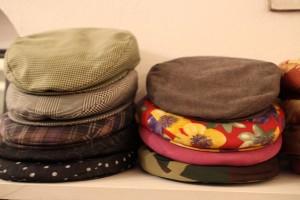Similar to my post for Day 1, today I’ll also be looking at the mafia but in another way. On our second night in the city, we went on a walking tour with a guide from Addiopizzo. On Monday evening, we met outside the Teatro Massimo (the third biggest theater in Europe) to go on a tour with a guide from Addiopizzo. The mafia makes business owners pay “pizzo” or protection money, but Addiopizzo was founded to support business owners who don’t pay. Today, a list of businesses that don’t pay is easily available in the city for people who believe in the organization’s philosophy: Pago chi non paga, I pay those who don’t pay. Our tour guide Erme brought us to a couple different sites like the Coppola Storta, the cathedral, and Piazza delle Vergogne to talk about the mafia’s interactions with different parts of the city. One good point I thought Erme made was that the mafia is more entrenched in smaller villages as denouncing the mafia means often turning on family in those places. Palermo and other cities with Addiopizzo can serve as a model, though, for those smaller towns.
 As a Sicilian-American, I remember my grandmother getting upset whenever people would ask her about the mafia as soon as she mentioned she’s Sicilian, as for so many people the mafia is all they think of when they consider Italy, especially Sicily. Our visit to the Coppola Storta was one of my favorites. The owner taught us about this hat which is traditionally popular among mafiosi. His store is part of a project in which people reclaim this hat from mafia iconography and instead own it as something for everyone. Today, people can send in old fabrics or materials and have them custom made into a coppola. While the store was making an appeal to tourists (the owner offered us half off during the tour), as a souvenir a coppola is much healthier for Sicily’s image than The Godfather aprons and mafiosi magnets that proliferate throughout the island.
As a Sicilian-American, I remember my grandmother getting upset whenever people would ask her about the mafia as soon as she mentioned she’s Sicilian, as for so many people the mafia is all they think of when they consider Italy, especially Sicily. Our visit to the Coppola Storta was one of my favorites. The owner taught us about this hat which is traditionally popular among mafiosi. His store is part of a project in which people reclaim this hat from mafia iconography and instead own it as something for everyone. Today, people can send in old fabrics or materials and have them custom made into a coppola. While the store was making an appeal to tourists (the owner offered us half off during the tour), as a souvenir a coppola is much healthier for Sicily’s image than The Godfather aprons and mafiosi magnets that proliferate throughout the island.